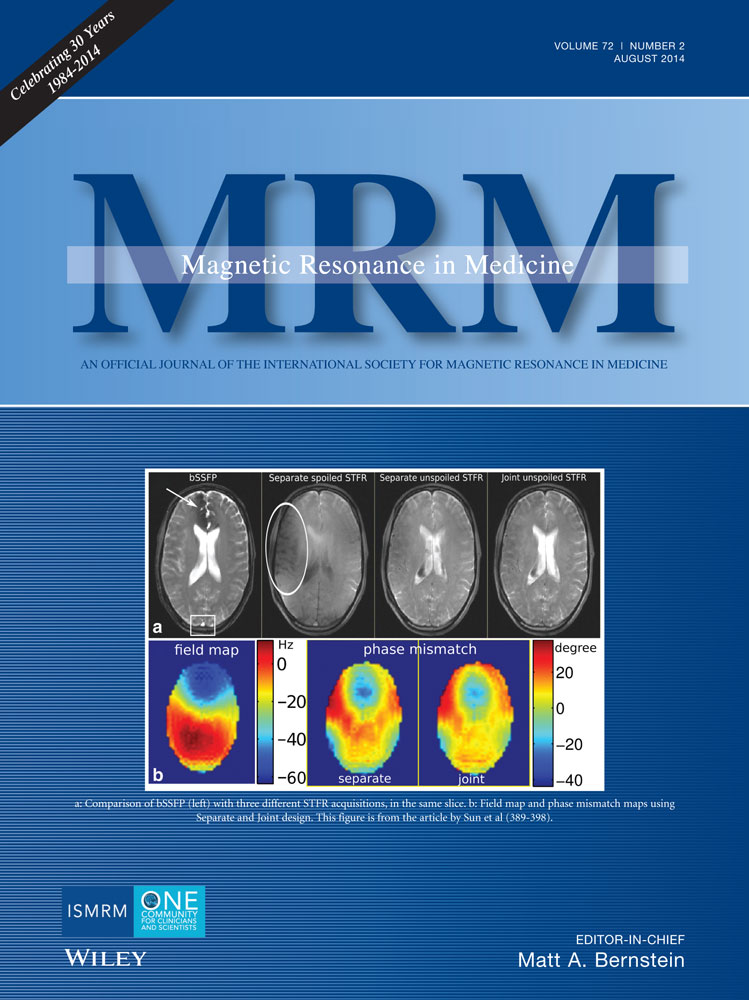Erratum to Quantitative MRI analysis of menisci using biexponential T2* fitting with a variable echo time sequence (Magn Reson Med 71:1015–1023)
In the article by Juras et al., (Quantitative MRI analysis of menisci using biexponential T2* fitting with a variable echo time sequence, Magn Reson Med 71:1015–1023), accidentally the T2/T2* was mistyped several times through the article as T1/T1*
The corrected sentences are below:
Introduction
- The recently introduced, three-dimensional, spoiled gradient echo (SPGR) sequence with a variable echo time scheme (3D vTE Cartesian SPGR, hereafter referred to as vTE) minimizes the abovementioned issues and was shown to be useful for visualizing MSK structures with a short T1, within short and clinically adequate scan times (12).
- Rauscher et al. demonstrated that T2 and T1ρ can be used in the menisci as markers of different stages of OA (15); both T2 and T1ρ increased in advanced stages of OA.
- As the relaxation constants, such as T2, T2*, or T1ρ, reflect the collagen structure organization in the meniscus, they are regionally dependent (14–16).
- When calculating T2 or T2* using a simple monoexponential fitting, the results may be remarkably underestimated, particularly in the areas with clear bi-component decay.
- To the best of our knowledge, there is no study that has comprehensively discussed the multiple compartment T2* mapping of the human menisci in vivo.
Methods > Statistical Analysis
- This sequence enables the use of the minimal effective echo time below 1 ms that is necessary for multicomponent T2* analysis.
- Descriptive statistics were performed in order to calculate the mean and standard deviation (SD) of age, T2*m, T2*s, T2*l, component ratios, and M/B values separately for normal, degenerative, and torn menisci. In order to compare average T2*m, T2*s, T2*l, and M/B of different meniscal parts (anterior/posterior, medial/lateral, healthy/degenerated/tear) a hierarchical linear model (HLM) was used in order to consider multiple measures per patient.
- ROC curves were constructed by plotting the fraction of true positives from the positives (true positive rate) versus the fraction of false-positives from the negatives (false-positive rate), at various threshold settings for each of the parameters (T2*m, T2*s, T2*l, and M/B).
Discussion
- Here, we propose a technique for in vivo, quantitative, bi-component T2* analysis of the human meniscus based on a 3D vTE Cartesian SPGR sequence with sequentially shifted echo times.
Conclusion
- The short component of T2* better reflects the anisotropy of collagen fibers and the change in degeneration processes that may result in meniscal tear.




